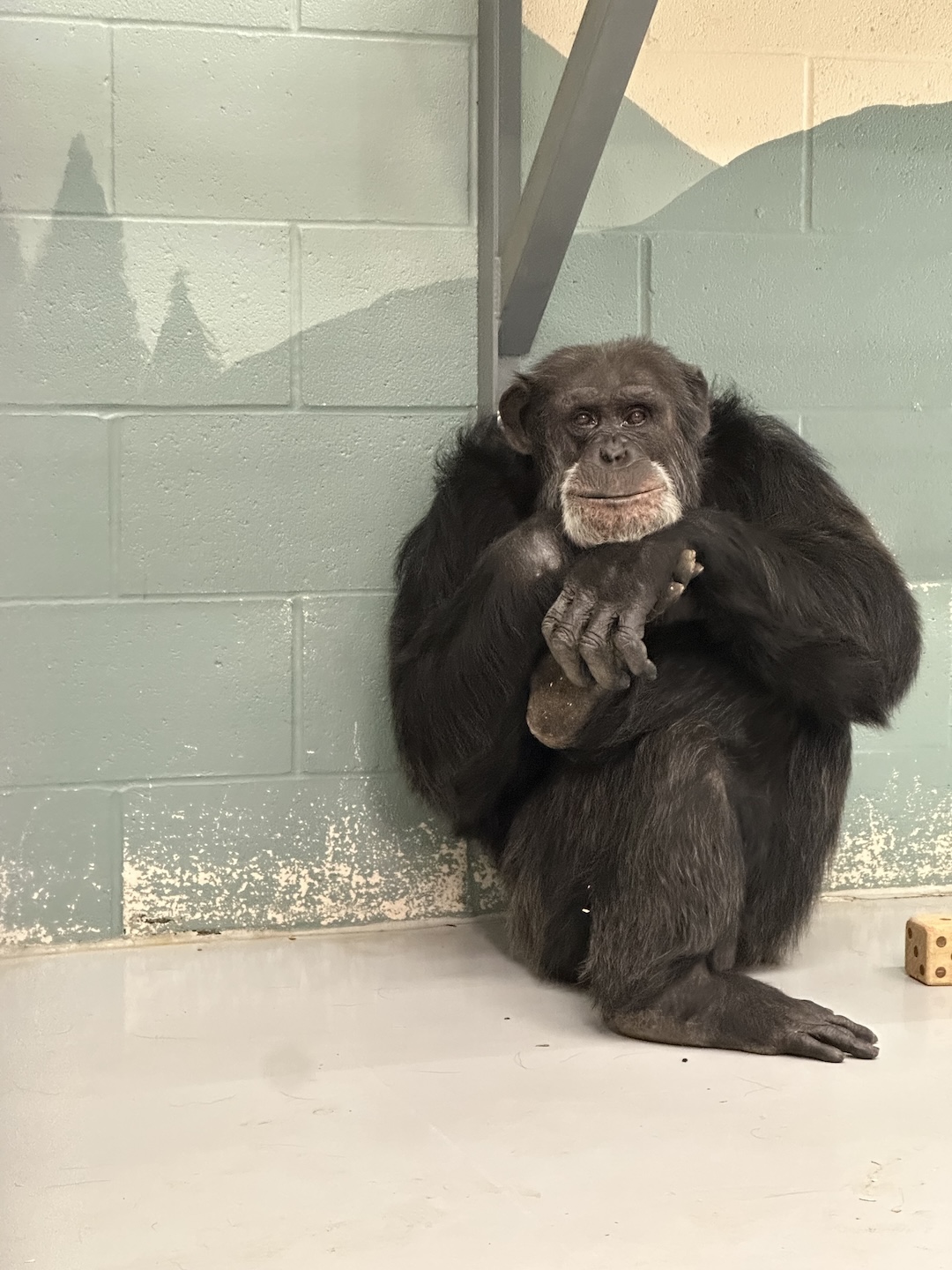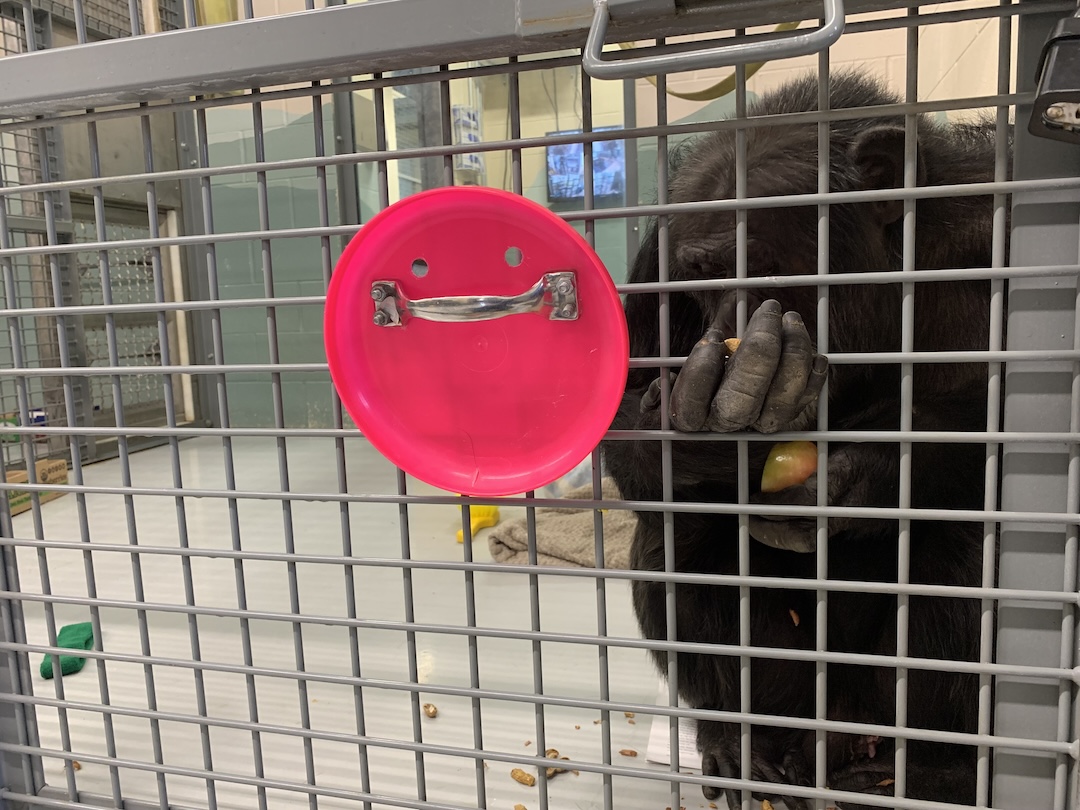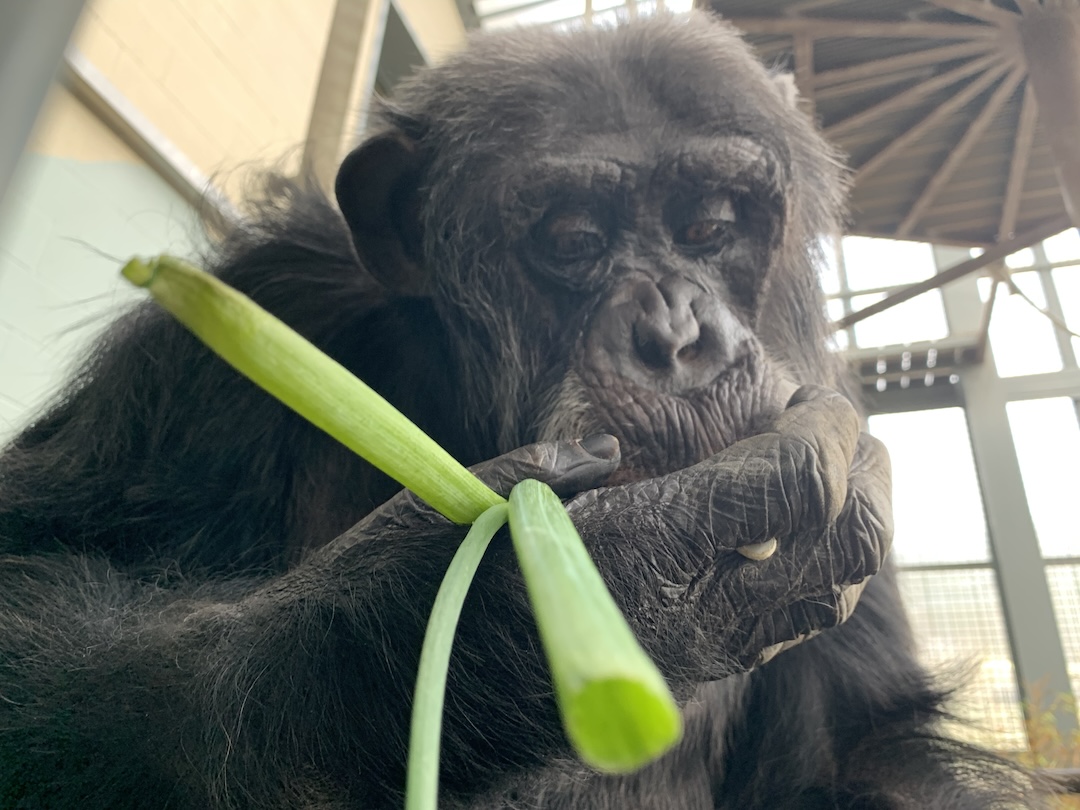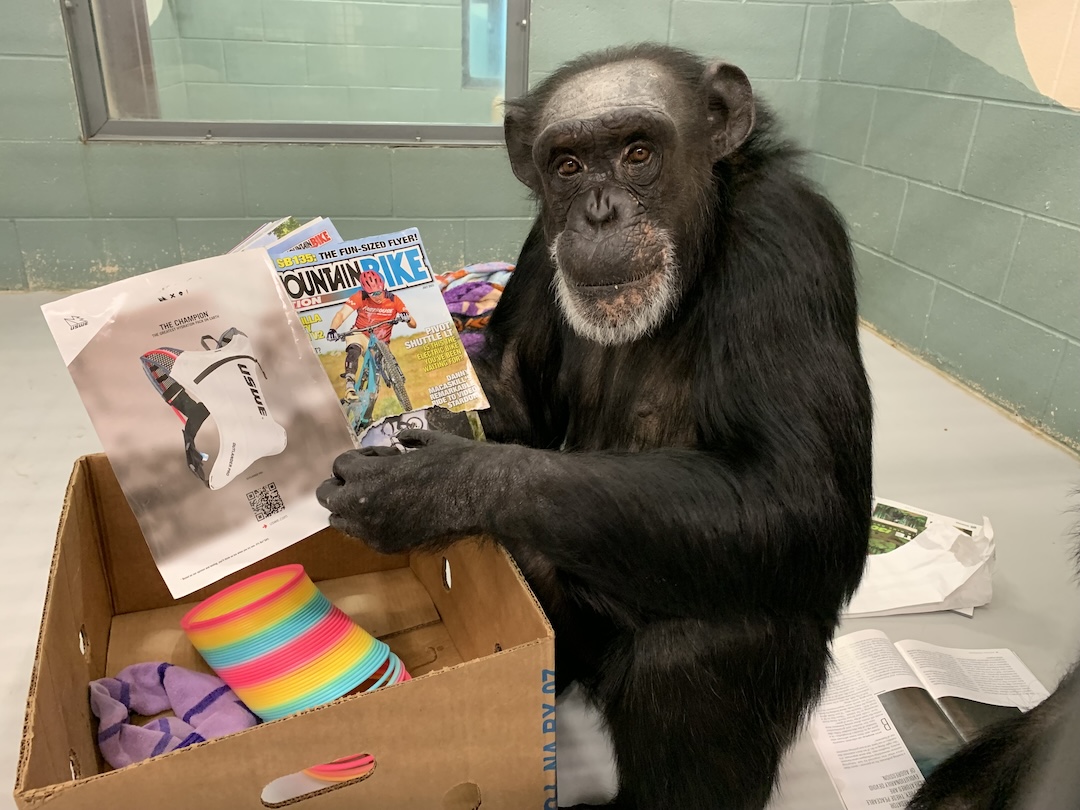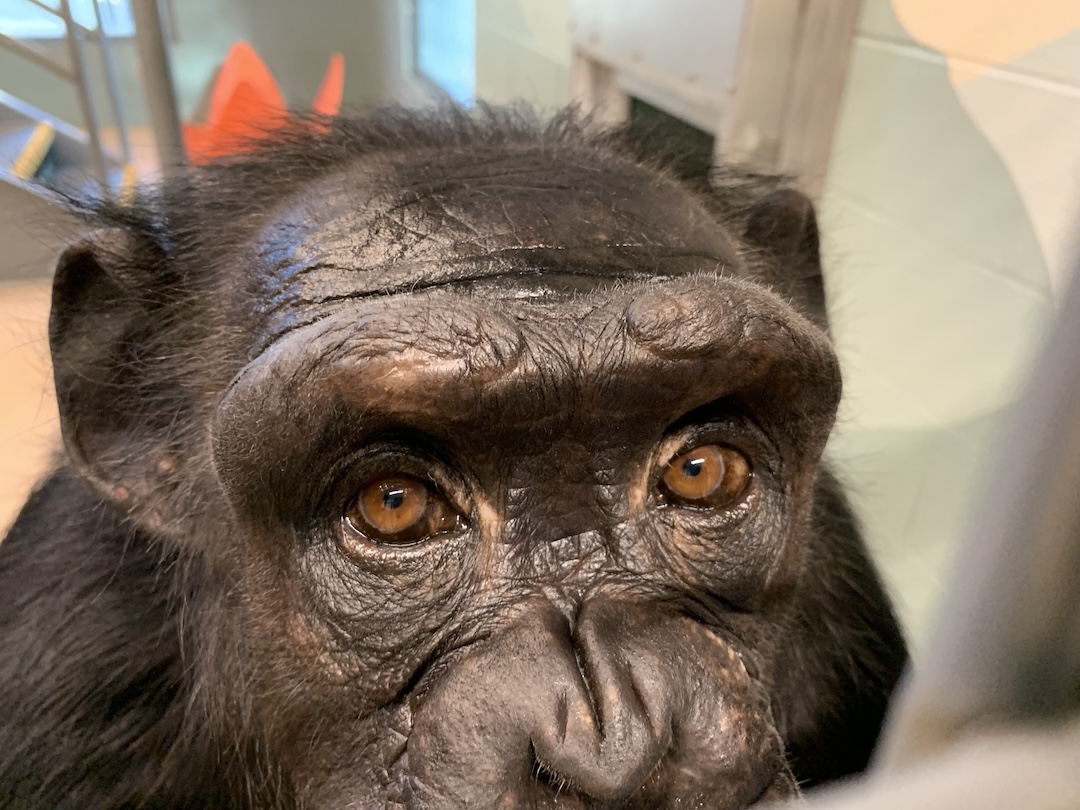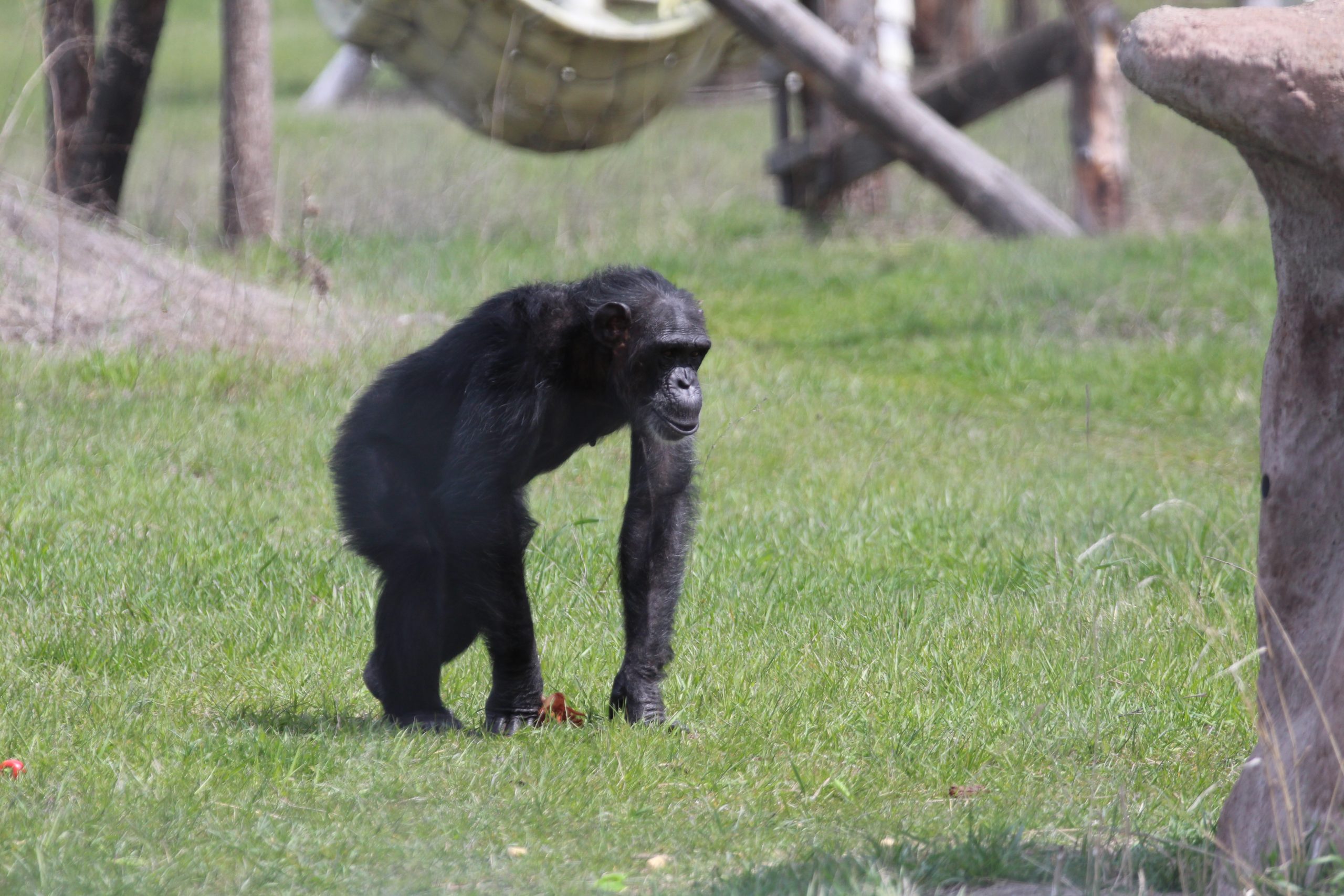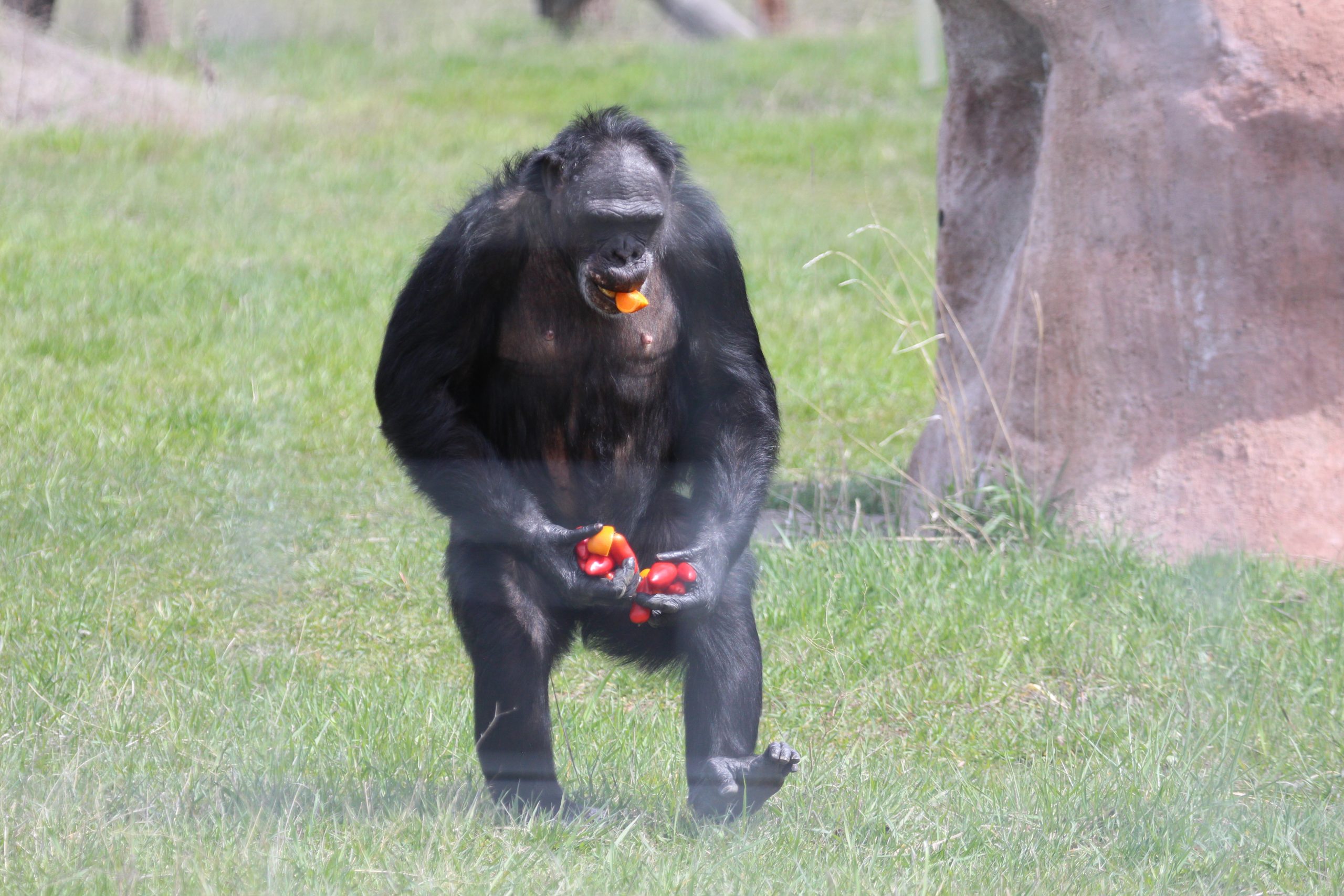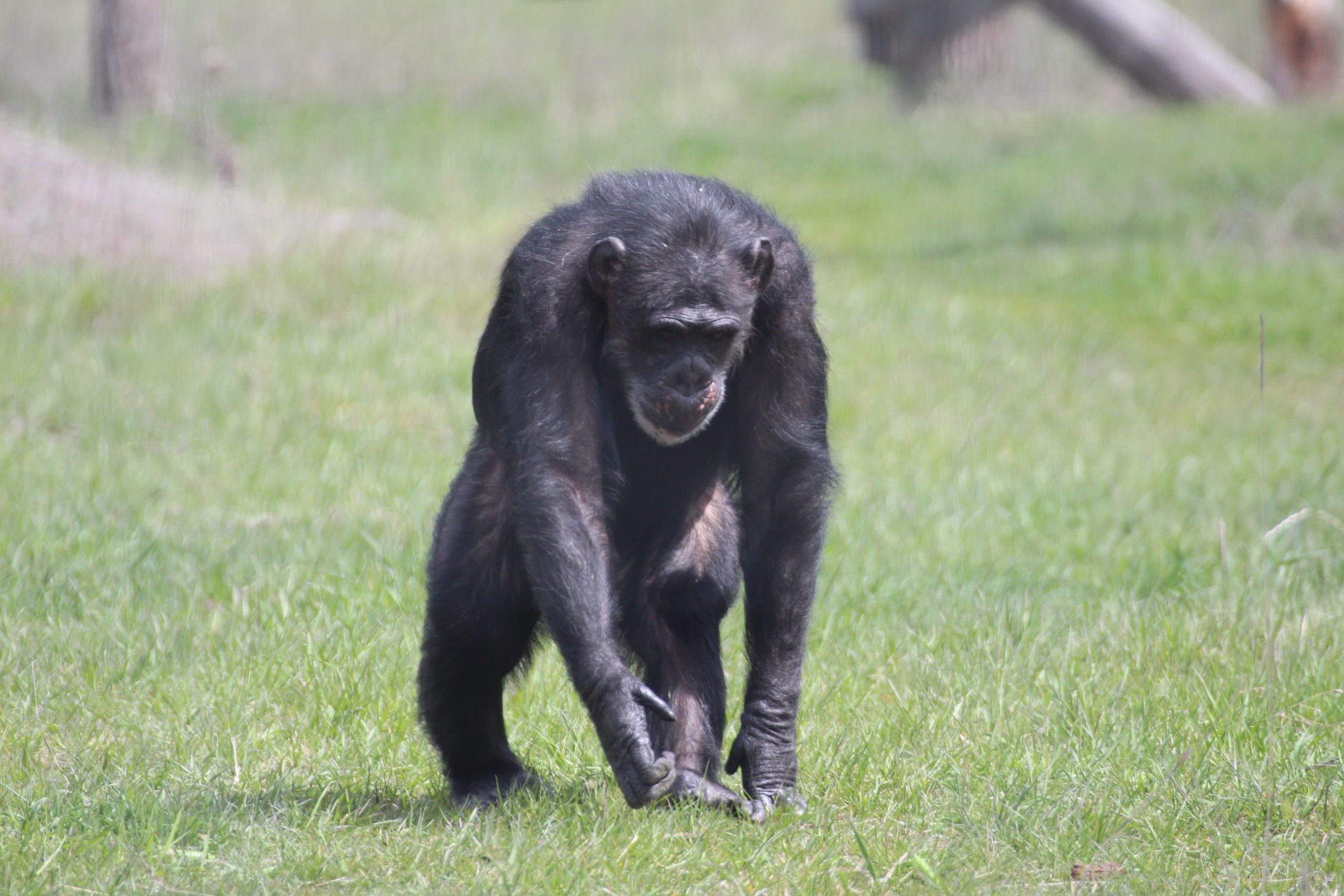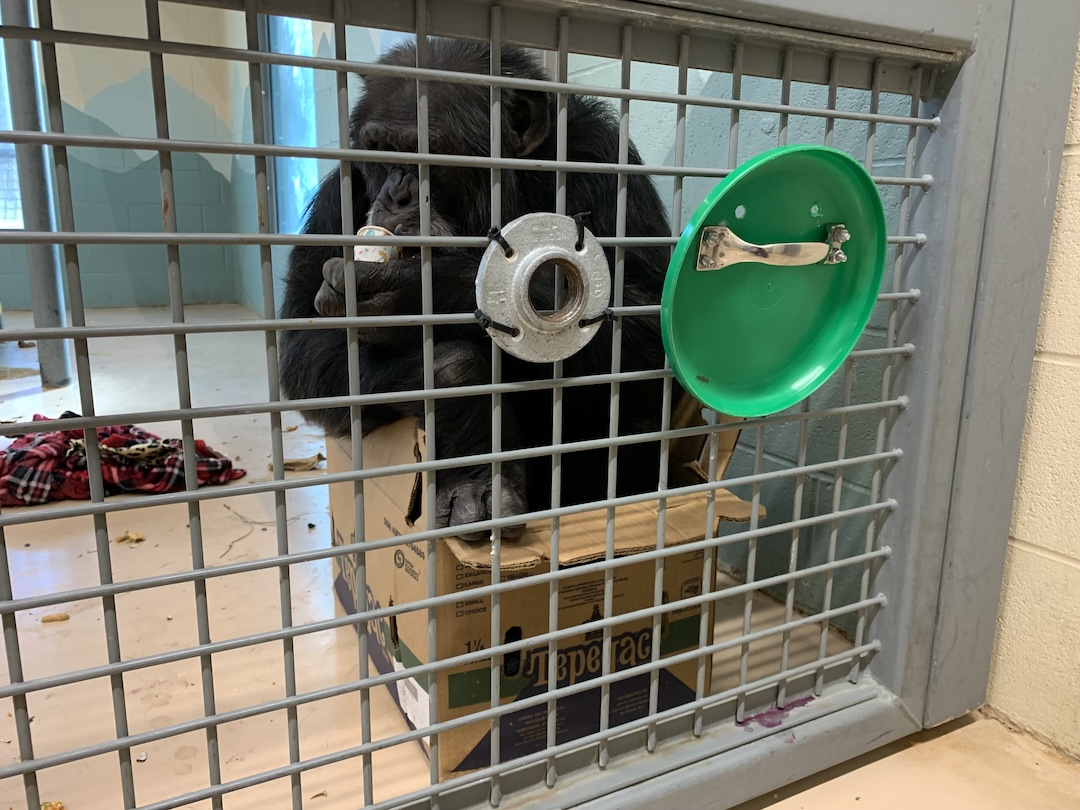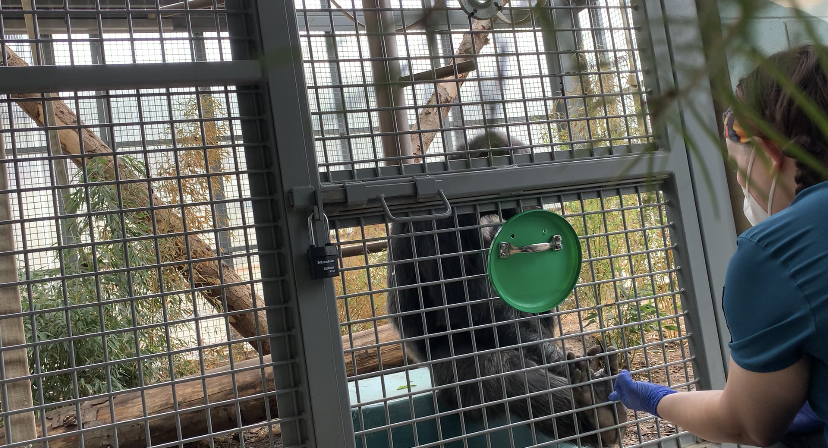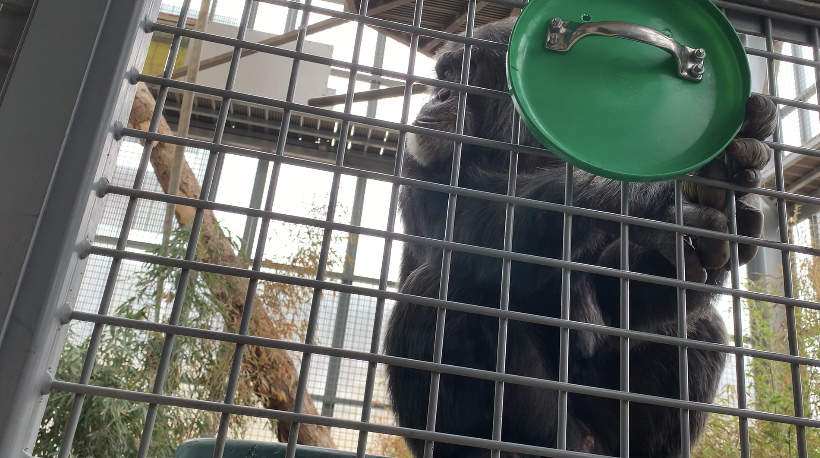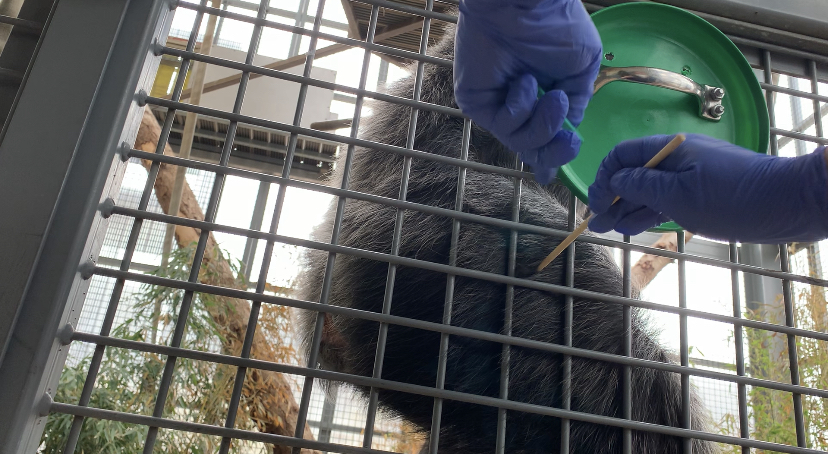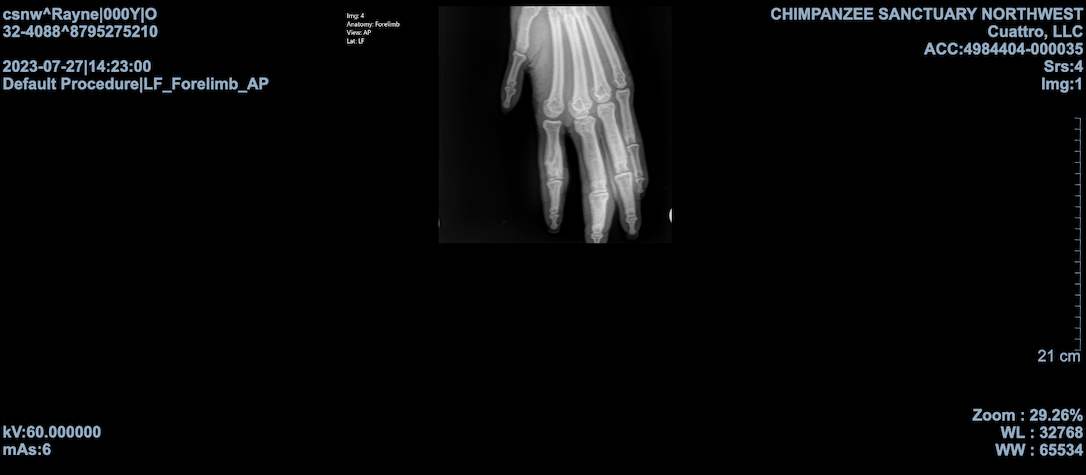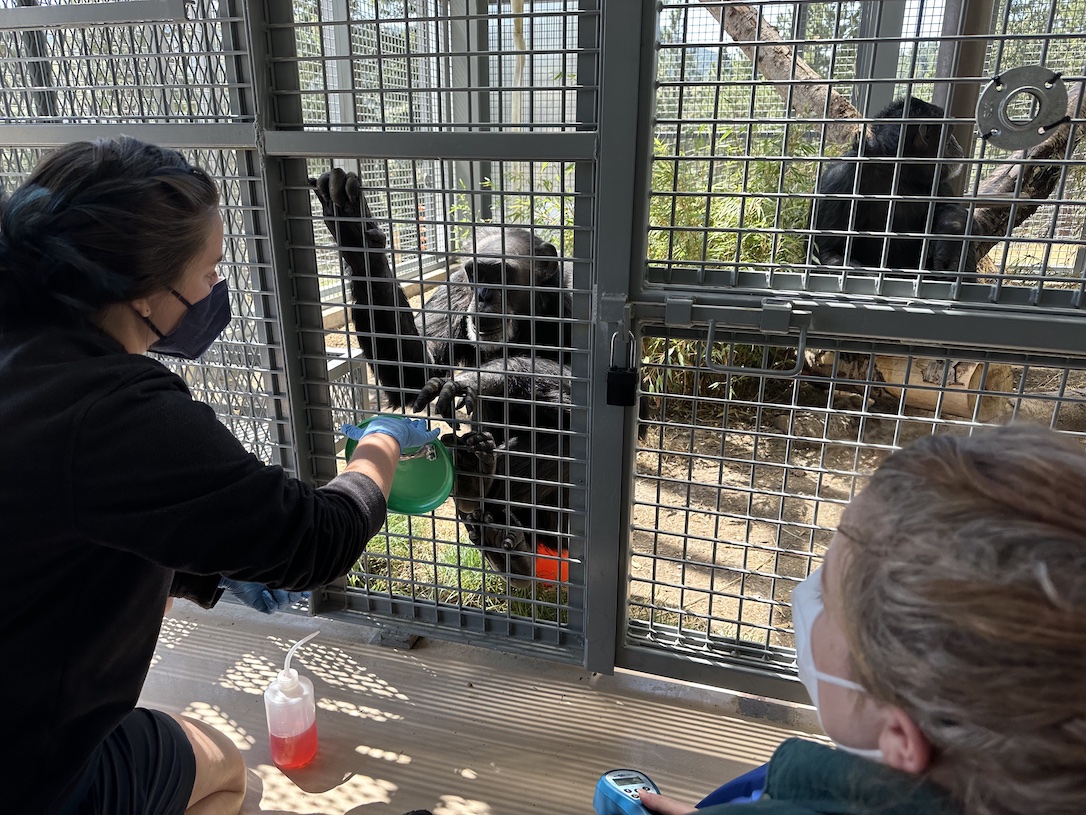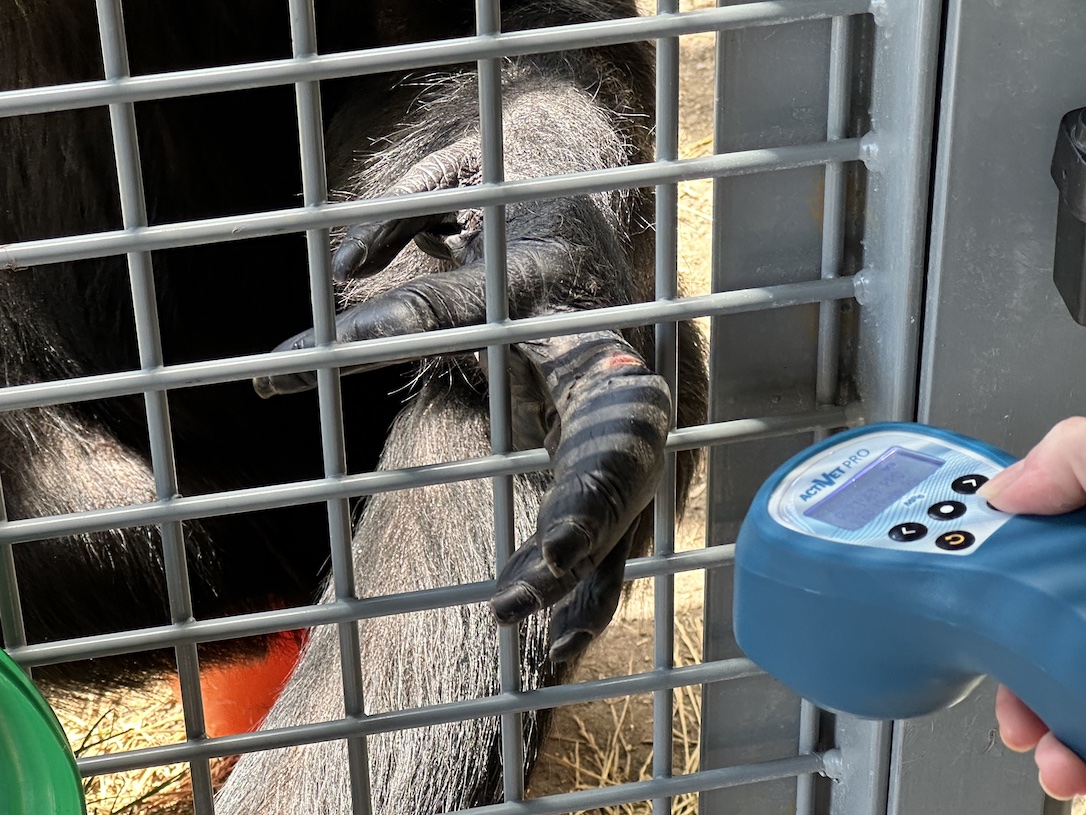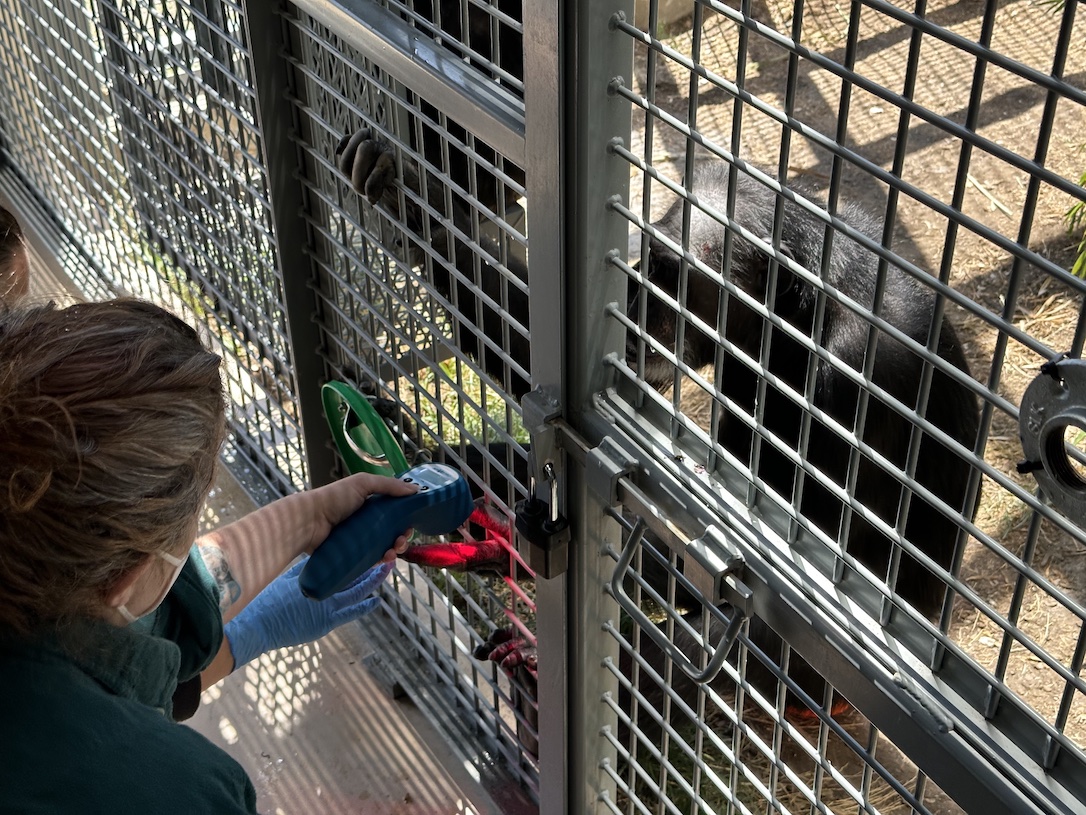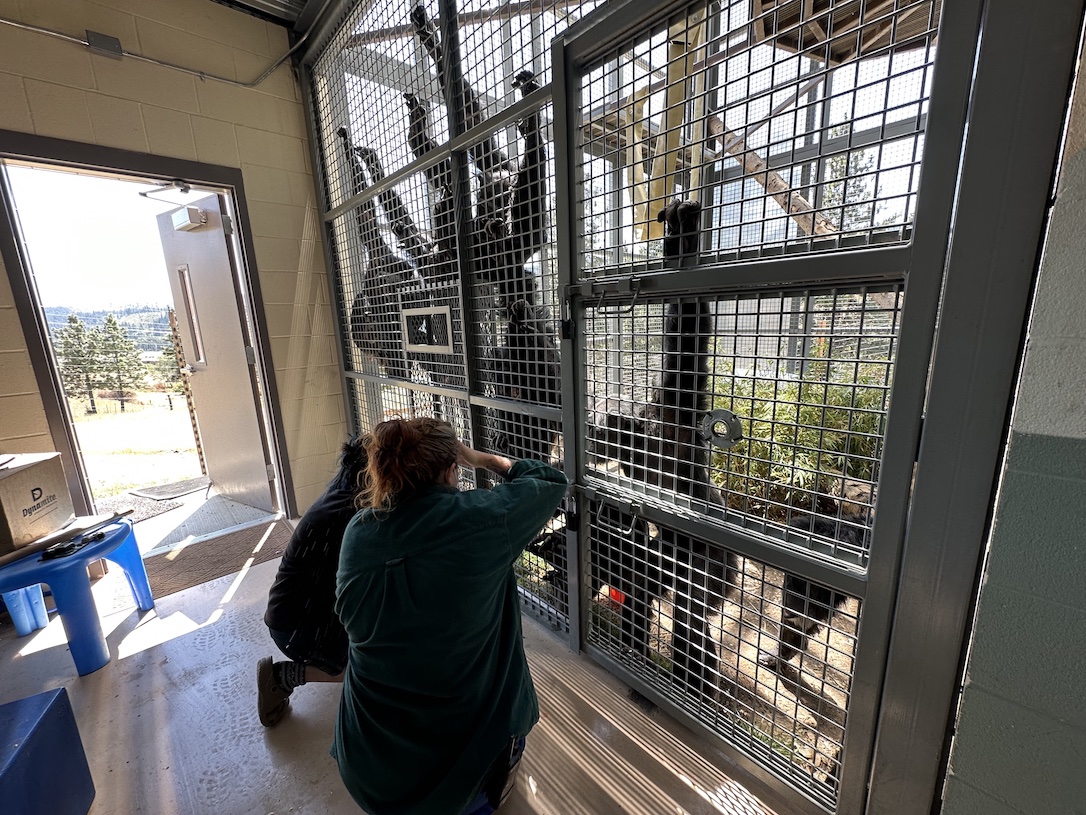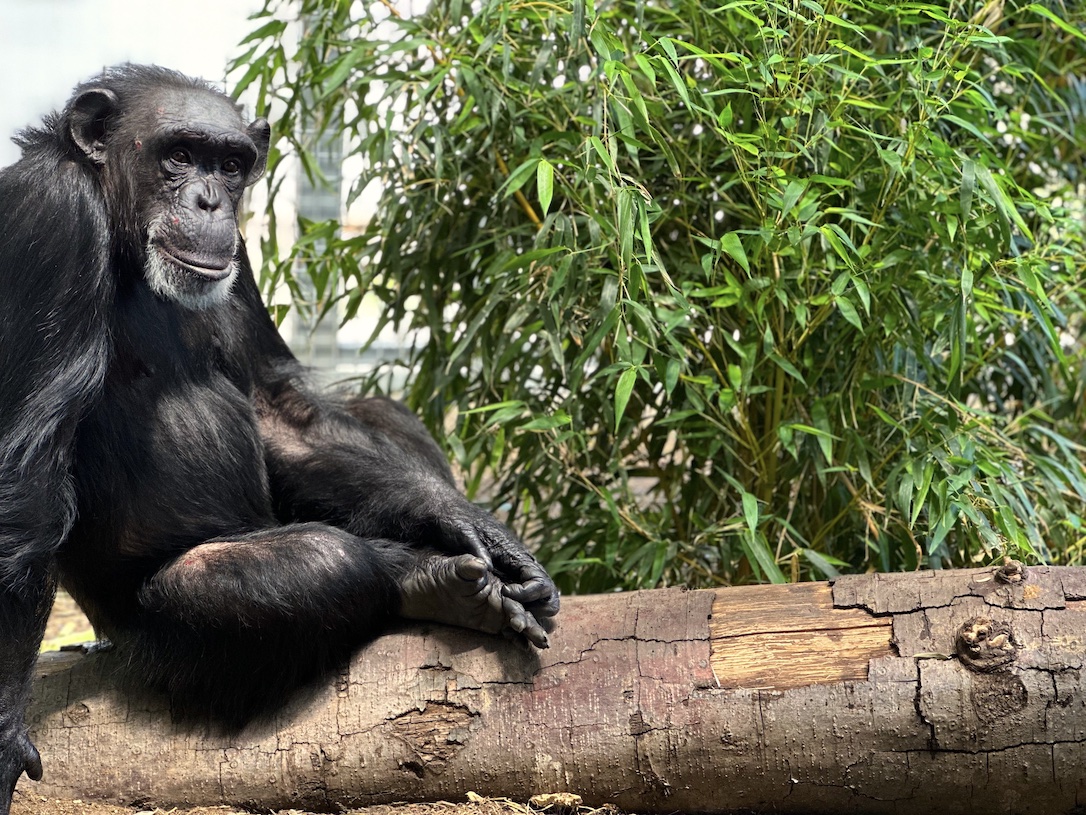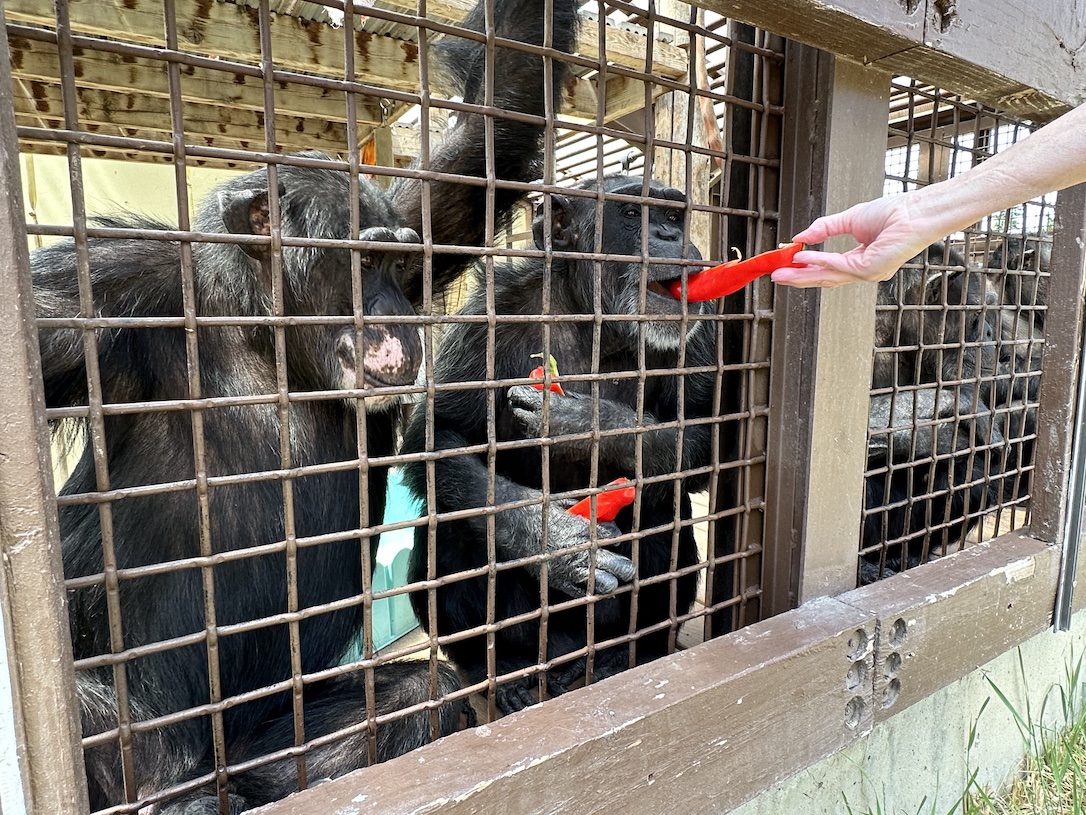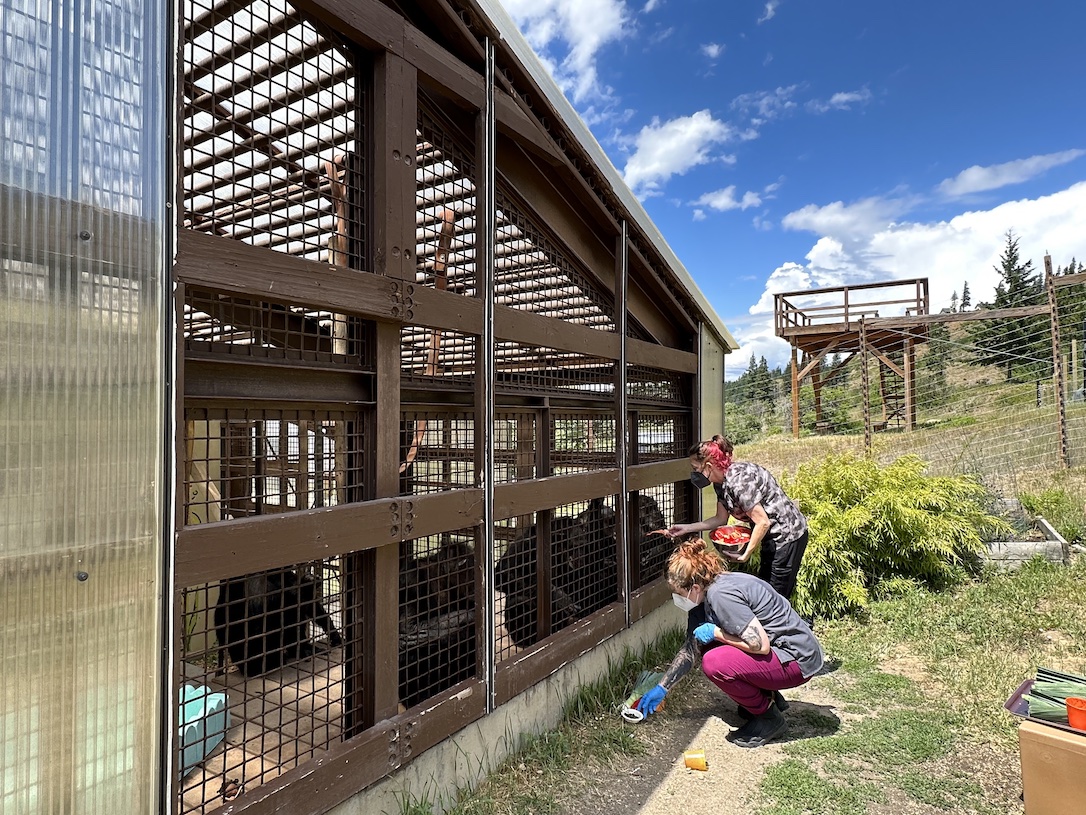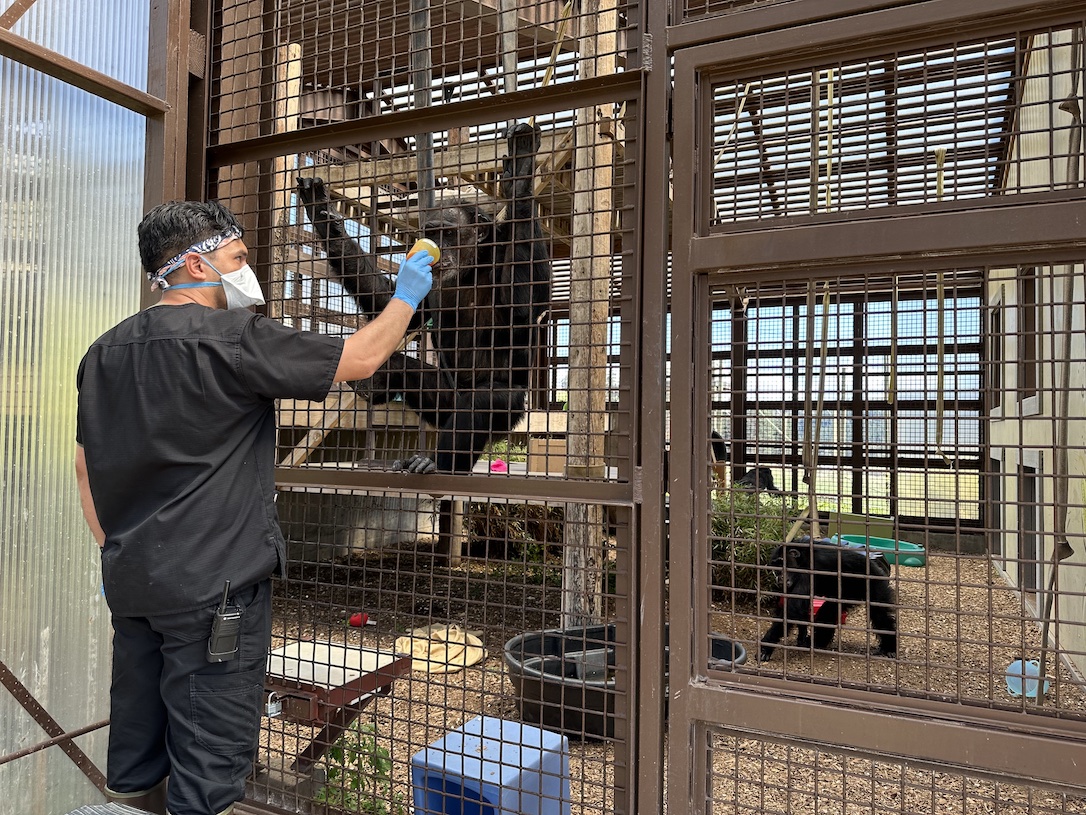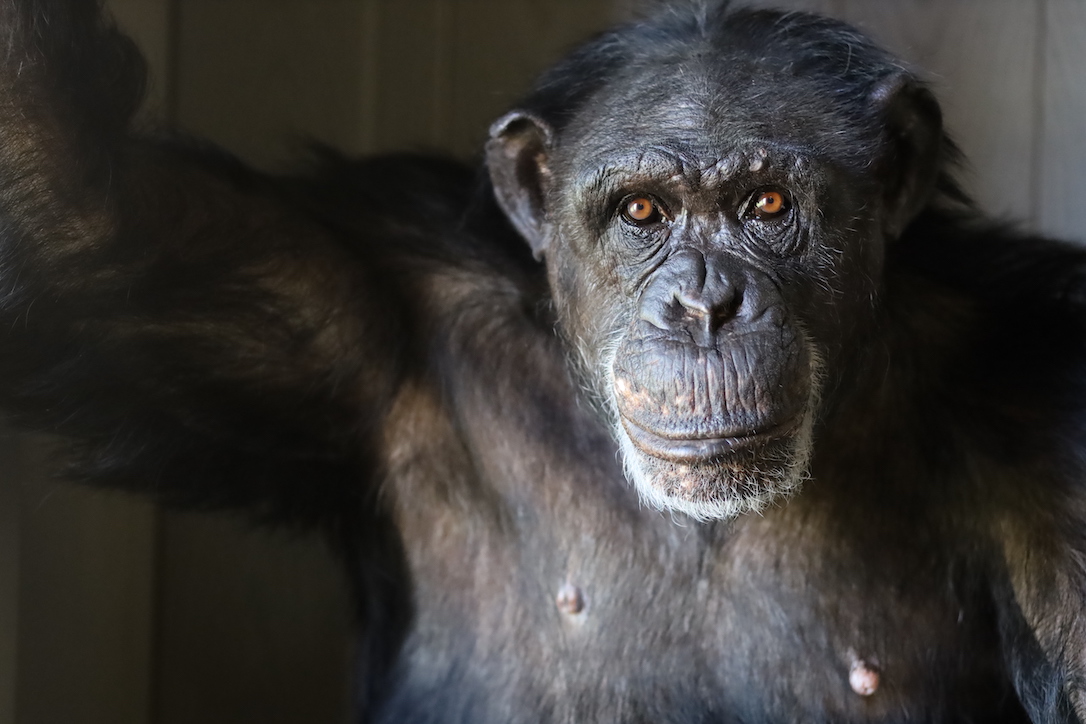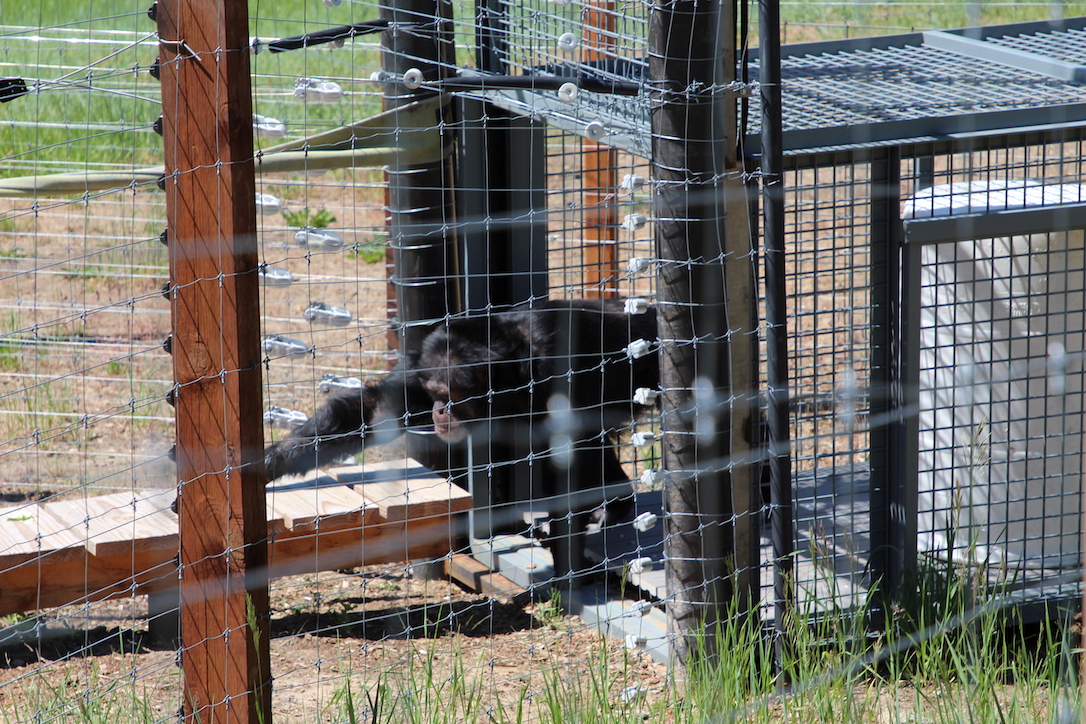Gordo has a routine physical exam in his future, as he has not yet had a physical exam in his time at CSNW and it doing so will allow us to have a better understanding of both his heart health and overall health. Because Gordo has not experienced an exam here before, we have made it a priority to prepare him as best as possible using Positive Reinforcement Training (PRT) so that his stress throughout the process can be as minimal as possible. In order for his exam to occur, he will first have to be separated from his group, and then sedated to allow for him to be safely removed from his room and evaluated by Dr. Erin and a team of other professionals that she will assemble. When we last checked in on Gordo’s training progress in March, he had been doing well presenting different parts of his body when asked, and was learning to come to his station marker.
Gordo being perfectly Gordo!
I am happy to report that Gordo has exceeded all of our expectations and progressed rather quickly through his training for allowing an injection (to allow for him to be sedated for his exam), as well as for being separated from his group! We started by simply asking him to participate in PRT in whatever way he felt most comfortable, which ended up being during meal times where the rest of the group was otherwise occupied and he was already used to coming up to us for his meals. We placed a station marker (which for us is a frisbee with a handle on one side and 2 hooks on the other so it can hang on the caging) on the caging wherever he chose to come up for his meal, and rewarded him for staying there throughout the meal, as well as for touching it when asked. Throughout the meal we would also ask him to present other body parts, especially focusing on his arms and legs as these would be ideal locations for him to eventually receive an injection. We also practice “target” regularly, where he is asked to touch the end of a pvc tube, as this can also be a good way to communicate with him when we want him to move somewhere else (by holding the target at the goal location and asking him to move to it by saying “target”). We use a clicker to communicate to him when he has done something correctly, and follow the click up with a reinforcer of some kind (his favorites are peanuts and fruit). Once Gordo seemed to have a good understanding of stationing, we started to ask him to station in different places to be sure he knew the same rules applied with his station in various locations. He caught on to this quickly, and we were soon able to start asking him to move from his usual mealtime spot in the Oakwood Greenhouse (or the chute/the Bray, depending on the day!) to the front rooms, where we will eventually ask him to separate from his group to allow his exam to take place.
During these daily training sessions, he has progressed from presenting his arms and legs while at his station, to letting his trainer poke him gently with a chopstick, then a capped needle, then blunt needle, and after many sessions together (and as of this week!), a real needle. He has allowed the “injection site” to be cleaned with an alcohol wipe, which can be quite an unusual experience when you don’t know what to expect. He has also allowed Dr. Erin to come along for some of our sessions, and has allowed for her to poke him with a blunt needle as well which is a very big deal as seeing your veterinarian with a needle in hand can be a very scary thing! We did, on the first session where Dr. Erin held the needle, first show him Dr. Erin poking me with the blunt needle so that he knew there was nothing to be scared of. He did seem anxious initially, but calmed down and allowed her to touch him gently with the blunt needle, then quickly inspected his leg after the brief touch, and finally slurped down his beloved surprise smoothie (a jackpot for a job VERY well done!). This has been such a rewarding process to see him succeed at every little step, and to see his confidence grow, seemingly both in doing PRT as well as in his group in general.
Gordo relaxed, eating his lunch at his station marker. You can see in the back left corner of the photo that the shift door to this room is closed, as he is being briefly separated from his group as part of his training to lessen his stress when he must be isolated for his upcoming physical exam. This was the first time we closed the door!
A lovely bonus of training with Gordo multiple times a day has been getting to spend extra quality time with him and getting to watch him savor his favorite foods. He is such a fun and unique person to get to know, and I am thankful for this extra time and trust-building we have been able to have together.
Gordo enjoys some green onions during breakfast
Our next steps will be to continue training together as often as we can, mostly working with a blunt needle for the injection training portion, and only intermittently using a real needle as we do not want to poke him often with a real needle. Dr. Erin will continue to come along when she can and practice injection training with Gordo as well. We will continue to practice separating him from the group in the front rooms for several minutes at a time a couple times a week during meals, so that when the time comes for him to be separated for his exam, he will hopefully feel less stressed than if we had not practiced and trained for this. I am so proud of all that Gordo has accomplished in his training already, and hope that all of his hard work pays off when the time comes for his exam! He really is a superstar of PRT (and of our hearts!).
